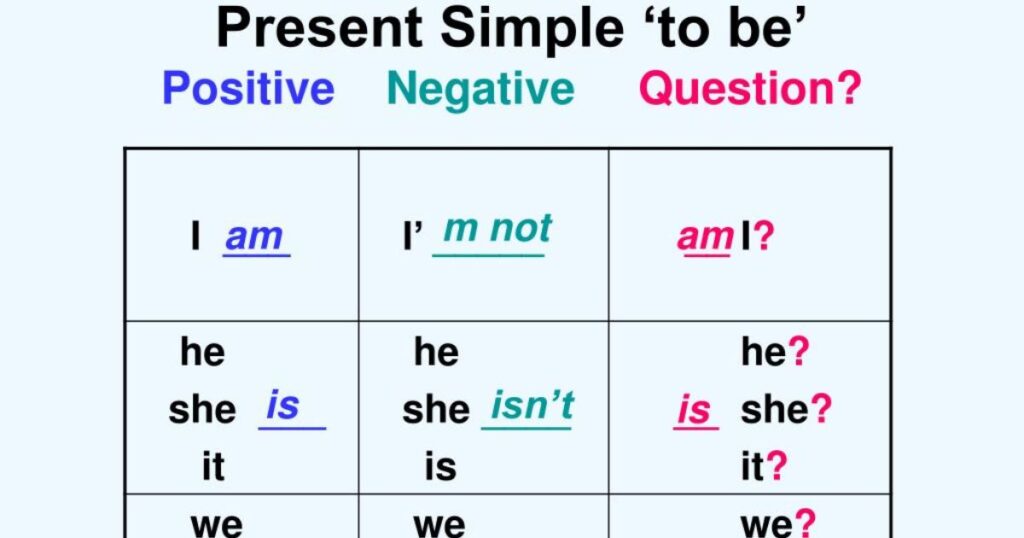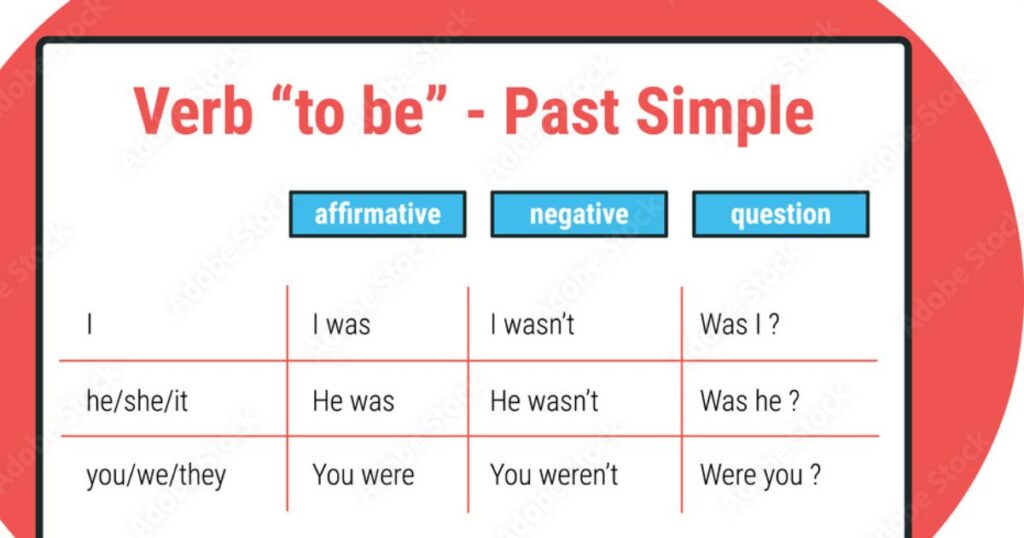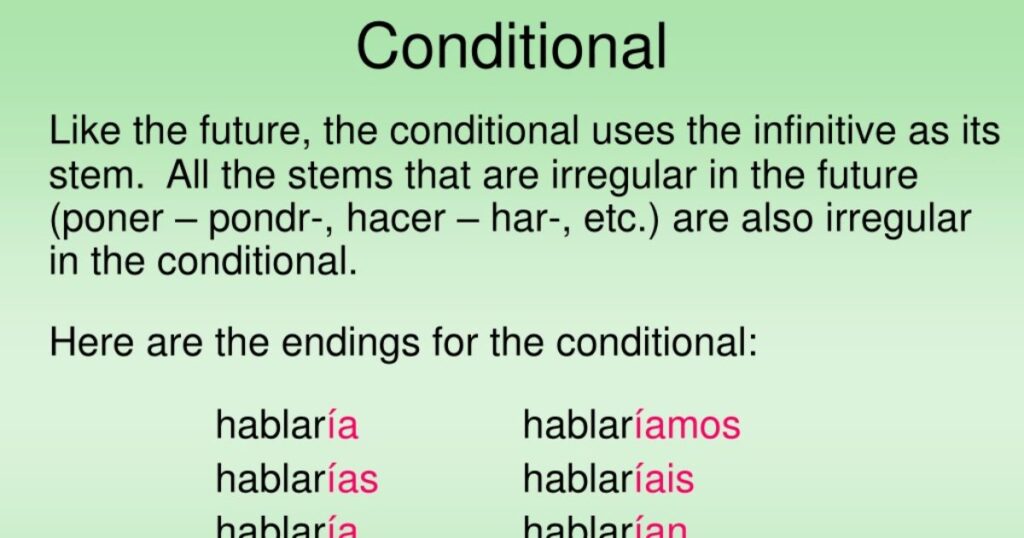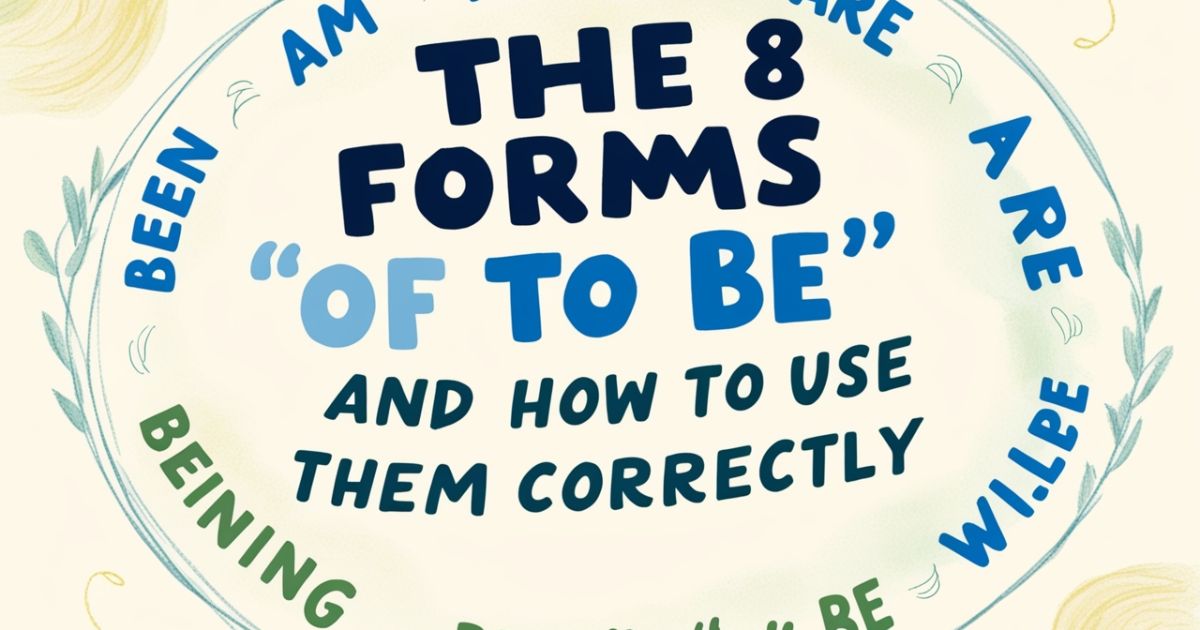Many people struggle with common grammar mistakes when using the verb “to be” explained. These small errors can make writing sound unprofessional or confusing. The English linking verbs system includes eight distinct forms that serve as the foundation of proper sentence structure.
What are the 8 forms of “to be”? They are: be, am, is, are, was, were, being, and been. Each form has specific rules for correct verb usage depending on the subject and tense of your sentence.
Mastering these forms of “to be” verb matters because they appear in almost every conversation and piece of writing. Whether you’re learning English grammar basics or helping others improve English fluency, understanding these forms will boost your confidence and clarity in communication.
This guide will break down each form with clear examples, show you how to avoid incorrect “to be” usage, and provide practical tips for mastering English tenses.
Understanding the Verb “To Be”
The verb “to be” explained functions as both a linking verb and an auxiliary verb in English sentences. As a linking verb, it connects the subject to additional information about that subject. As a helping verbs in English, it works with other verbs to create different tenses and meanings.
In sentence structure, be verbs definition and examples show how these words link subjects to descriptions, locations, or states of being. For example, “She is happy” connects “she” to the description “happy.”
The verb tenses in grammar system divides “to be” usage into three main time periods. Present tense of “to be” describes current states or ongoing situations. Past tense of “to be” refers to completed actions or past conditions. Future forms work with modal verbs with “be” to express upcoming events or possibilities.
Understanding subject-verb agreement rules is crucial because the form of “to be” must match the subject. This means choosing the right form based on whether the subject is singular or plural, first person, second person, or third person.
The 8 Forms of “To Be” Explained
A. Present Forms of “To Be”

Am
Am serves as the first-person singular form, used exclusively with “I.” This be form of verb example appears in sentences like “I am ready” or “I am learning English grammar basics.” The am is are usage rules make this form the simplest to remember because it only pairs with one pronoun.
Is
Is functions as the third-person singular form for “he,” “she,” and “it.” Be form verbs examples sentences include “He is tall,” “She is studying,” and “It is raining.” This form also works with singular nouns like “The dog is sleeping” or “My teacher is helpful.”
Are
Are handles second-person singular and plural situations, plus all plural subjects. You use it with “you” (both singular and plural), “we,” “they,” and plural nouns. Examples include “You are smart,” “We are friends,” and “The books are heavy.”
B. Past Forms of “To Be”

Was
Was represents the first and third-person singular past form. Was vs were usage shows that “was” pairs with “I,” “he,” “she,” and “it.” Common examples include “I was tired yesterday” and “The movie was exciting.” This form helps create grammar exercises for beginners because it follows clear patterns.
Were
Were covers second-person and all plural past situations. The be 2nd and 3rd form of verb system uses “were” with “you,” “we,” “they,” and plural subjects. Examples include “You were late” and “They were happy.” Were also appears in subjunctive mood sentences expressing hypothetical situations: “If I were rich, I would travel.”
C. Future and Conditional Forms

Be
Be appears as the infinitive form of “to be” and base form. Use of be in sentence includes infinitive phrases like “to be honest” and imperative commands like “Be quiet!” This form also works with modal verbs such as “will be,” “can be,” and “should be.”
Being
Being functions as the present participle of be and gerund form. Being vs been differences show that “being” indicates ongoing actions or states. Examples include “Being careful is important” (gerund) and “I am being patient” (present participle in continuous tense).
Been
Been serves as the past participle of be in perfect tense constructions. Three forms of be culminate with this form, which appears in sentences like “I have been waiting” and “They had been friends for years.” This form creates passive voice structures and complex tenses.
Common Usage Rules and Examples
Subject-verb agreement rules form the foundation of correct verb usage with “to be” forms. The subject determines which form to use, creating predictable patterns that help avoid grammar correction examples situations.
Contractions make conversation flow naturally while maintaining proper grammar structure. Common contractions include “I’m” (I am), “you’re” (you are), “he’s/she’s/it’s” (he/she/it is), “we’re” (we are), “they’re” (they are), “I’m not” (I am not), and “aren’t” (are not).
Negative forms require careful attention to subject verb mismatch prevention. Use “am not” with “I,” “is not” or “isn’t” with singular subjects, and “are not” or “aren’t” with plural subjects and “you.” Past negatives include “was not” or “wasn’t” and “were not” or “weren’t.”
Be verb examples in questions reverse the typical word order: “Am I correct?” “Is she coming?” “Are they ready?” This inversion pattern helps create clear, grammatically correct questions while maintaining sentence structure with “to be”.
Frequent Mistakes and How to Avoid Them
Am is are errors frequently occur when speakers confuse subject-verb agreement. “I are” represents incorrect “to be” usage because “I” always pairs with “am.” Remember: “I am,” never “I are.” This mistake often happens when people overthink English language learning tips.
Was were confusion creates tense errors in writing in both casual and formal contexts. “You was” is always wrong because “you” requires “were” in past tense. Whether addressing one person or multiple people, always use “You were late” or “You were surprised.”
Mistakes with “being” and “been” often involve be verb misuse in complex sentences. “Being” indicates ongoing actions or states, while “been” shows completed actions with lasting effects. “I am being careful” (ongoing) versus “I have been careful” (completed with current relevance) demonstrates this distinction.
Fixing verb tense errors requires understanding when each form applies. Grammar tips for using be verbs include checking the subject first, identifying the time period, and matching the correct form to both elements.
Practice Exercises and Tips
How to use “to be” effectively starts with identifying the subject and time frame of each sentence. Grammar lessons for students emphasize checking these two elements before choosing the appropriate form.
English verb worksheets often include substitution exercises where you replace one form with another to see how meaning changes. Try converting “I am happy” to “I was happy” to “I will be happy” to understand how verb form chart relationships work.
ESL grammar help strategies include creating personal example sentences using each form. Practice with be verbs definition and examples by writing sentences about your daily life, using different subjects and time periods.
Simple guide to English verb “to be” memory tricks include associating each form with specific pronouns and remembering that singular subjects generally use different forms than plural subjects.
FAQ’s: The 8 Forms of “To Be”
What are the 8 forms of the verb to be?
The 8 forms of “to be” are be, am, is, are, was, were, being, and been.
What are the 8 basic be verbs?
The 8 basic be verbs are be (infinitive), am (present first person), is (present third person singular), are (present second person/plural), was (past singular), were (past plural), being (present participle), and been (past participle).
What are the 8 types of verbs with examples?
The 8 types of verbs include action verbs (run, jump), linking verbs (be, seem), auxiliary verbs (have, will), modal verbs (can, must), transitive verbs (hit ball), intransitive verbs (sleep), regular verbs (walk-walked), and irregular verbs (go-went).
What are the forms and uses of be?
The forms and uses of “be” include present forms (am/is/are) for current states, past forms (was/were) for completed actions, being for continuous tenses, been for perfect tenses, and be as the base infinitive form.
Conclusion
Learn English grammar success depends on mastering these eight fundamental forms. Be, am, is, are, was, were, being, and been form the backbone of English communication, appearing in virtually every conversation and piece of writing.
Verb usage guide principles show that understanding these forms improves both spoken and written communication. Professional writing, academic papers, and everyday conversations all benefit from correct verb usage patterns.
Consistent practice and paying attention to tense, subject, and sentence structure will help you use it correctly. By learning be, am, is, are, was, were, being, and been, you will gain confidence in your grammar. Keep practicing, and soon, using “to be” will feel easy and natural!

Faraz Babar is a skilled wordsmith with a keen interest in the rich world of synonyms and language nuances. With a flair for simplifying complex vocabulary, he crafts content that’s both enlightening and enjoyable to read.











